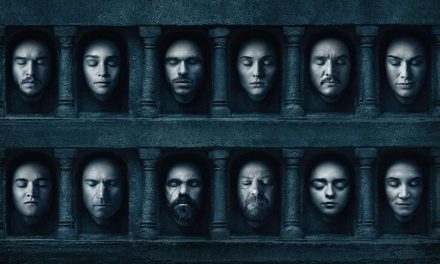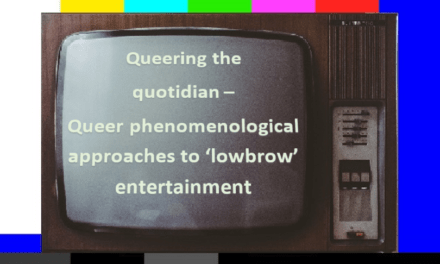We invite proposals for 20-minute papers and 80-minute panels to be presented at the sixth Fear 2000 conference, Fear 2000: Horror Undying. Hosted by staff and postgraduate students in the Centre for Culture, Media and Society and the Department of Media Arts and Communication at Sheffield Hallam University, this online conference will explore connections between twenty-first century horror and the genre’s history.
Taking inspiration from the recent trend for ‘legacy sequels’ such as Blair Witch (2016), The Exorcist (2016–2017), Halloween (2018), Spiral (2021), Candyman (2021), Chucky (2021– ), Scream (2022) and Texas Chainsaw Massacre (2022), Fear 2000: Horror Undying aims to form social, cultural, political, industrial and textual links between horror past and present. The conference will discuss contemporary horror media through topics such as franchising, sequelisation, remaking, adaptation, nostalgia, intertextuality, homage, pastiche and parody. It will also investigate historic themes, issues, styles, modes and sub-genres that have recurred post-2000. Any paper that aims to explore the historical legacy of the horror genre in the new millennium will be considered; please see below for a list of suggested topics.
Our first keynote speaker for this event will be Stella Gaynor (University of Salford), author of the forthcoming monograph Viewer Discretion is Advised: Rethinking Horror in the New Economies of Television, who will discuss historic franchise properties on contemporary TV. Further keynote lectures will be announced via our website and social media channels. The programme will also include special events to be announced.
This three-day conference will take place on 1-3 July 2022. The extended deadline for proposals is 11 April 2022. For individual papers, please send an abstract (maximum 300 words) and bio (maximum 75 words) to Craig Ian Mann (c.mann@shu.ac.uk), Chris Cooke (c.cooke@shu.ac.uk) and Oliver Hicks (oli.hicks@student.shu.ac.uk). Your submission should be in .doc or .docx format if possible and include your name, the title of your paper and your institutional affiliation (if applicable; independent scholars are welcomed).
We also seek proposals for 80-minute panels comprising three speakers; if you would like to propose a panel, please keep submissions to a maximum of 1000 words and include abstracts, institutional affiliations and contact information for all speakers and a chair. Panels should run to no more than 80 minutes.
Please direct any informal enquiries to the organisers using the email addresses listed above.
You can also find information on the conference via the following channels:
- Twitter (http://twitter.com/shufear2000/)
- Facebook (http://facebook.com/fear2000/)
- Web (https://blogs.shu.ac.uk/fear2000/)
Any paper that makes any connection between horror past and present is welcome and will be considered. Topics proposed might include (but are not limited to):
Reworkings of pre-2000 horror media via, e.g.
- Adaptation
- Remaking
- Sequelisation
- Transmedia franchising
Textual connections between horror past and present via, e.g.
- Homage
- Intertextuality
- Nostalgia
- Pastiche
- Parody
Resurgent social, cultural or political themes relating to e.g.
- Class / economics
- Disability
- Gender
- Nationality
- Race
- Religion
- Sexuality
- War / conflict
The contemporary legacies of popular horror franchises, e.g.
- Candyman
- Child’s Play / Chucky
- Critters
- Evil Dead
- The Exorcist
- Fear Street
- Friday the 13th
- Goosebumps
- Halloween
- Hellraiser
- I Know What You Did Last Summer
- Psycho
- Scream
- The Texas Chain Saw Massacre
Contemporary uses or reimaginings of classic monsters or folklore, e.g.
- Aliens
- Demons
- Dracula / vampires
- Frankenstein’s monster
- Ghosts
- The Invisible Man
- The Mummy
- Werewolves
- Witches
- Zombies
The historic development of horror in specific media, e.g.
- Cinema to streaming
- EC to contemporary comics
- Radio to podcasts
- TV to ‘Quality TV’
- First- to ninth-generation video games
Aesthetic and material reference to pre-2000 horror media, e.g.
- 8-64bit video games
- 16mm / 32mm film
- Academy aspect ratio
- Casette / vinyl
- Monocrome cinematography
- Practical special effects
- Silent cinema
- VHS
The contemporary production practices of historic houses of horror, e.g.
- Amblin Entertainment
- Dark Castle Entertainment
- Full Moon Features
- Glass Eye Pix
- Hammer Films
- Troma
- Universal Pictures
The contemporary work of historic ‘Masters of Horror’ e.g.
- John Carpenter
- Wes Craven
- Joe Dante
- Ernest Dickerson
- Tobe Hooper
- Mary Lambert
- George A. Romero
New horror histories via, e.g.
- Archival materials
- Audience research
- Oral histories
- Unmade studies






